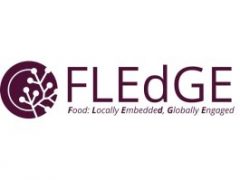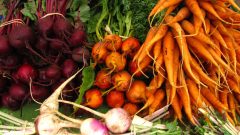by Amanda Wilson, Community Co-Lead, CCE Brokering (Food Sovereignty) Working Group
 One of the first projects I became involved in when I joined CFICE was developing a peer review process for a series of discussion papers mapping the food policy landscape in Canada. It was part of a research collaboration between Food Secure Canada and another research project– FLEdGE (Food: Locally Embedded, Globally Engaged). The Discussion Papers, along with Policy Maps and Summary Tables, had been developed by a Masters student working as an RA on the project; the thought was that they should go through some sort of review process before being shared publicly.
One of the first projects I became involved in when I joined CFICE was developing a peer review process for a series of discussion papers mapping the food policy landscape in Canada. It was part of a research collaboration between Food Secure Canada and another research project– FLEdGE (Food: Locally Embedded, Globally Engaged). The Discussion Papers, along with Policy Maps and Summary Tables, had been developed by a Masters student working as an RA on the project; the thought was that they should go through some sort of review process before being shared publicly.
 A traditional academic peer review process did not seem appropriate, as this research was very much informed by the priorities and experiences of community food organizations and NGOs. However, at the same time, the project leads wanted to ensure the Discussion Papers had a level of academic rigour.
A traditional academic peer review process did not seem appropriate, as this research was very much informed by the priorities and experiences of community food organizations and NGOs. However, at the same time, the project leads wanted to ensure the Discussion Papers had a level of academic rigour.
Because the objective of our CFICE Working Group (the Food Sovereignty Brokering Working Group) is to strengthen and support community-academic collaborations in the food movement, this was an ideal project for our Working Group to tackle.
What is Peer Review?
Peer review is a long standing process of evaluating and assessing material submitted for publication within the academic community. One of the unique features is that this review is undertaken by fellow academics, usually peers who are experts, or well-versed in the topic area under discussion.
The reviewer will either recommend the manuscript for publication, reject it, or propose a series of revisions for the author to undertake. Reviewers are sometimes given a short list of questions to answer in completing their review, and provide general comments for the author.
Designing a Community-Academic Peer Review
In establishing a community-academic peer review process, we did several things a bit differently. To start, we sought ‘peers’ from both the community and academia, aiming for one academic and one community reviewer for each of the 6 Discussion Papers. In the end we ended up identifying many reviewers who fit both the community and academic profile, having one foot in both worlds.
As with any review process, it can be a challenge to get people to agree to act as referees, particularly for community-practitioners. However, most people who were contacted agreed, and several commented that they believed in the importance of the project and thus wanted to support it.
One of the key differences in designing a community-academic peer review process was the desire to provide as much context and information as possible. In a typical peer review, the identity of the author is unknown to the reviewer, and the identity of the reviewer is usually anonymous (though in some cases academic publications have started using an open peer review process). All you have to go on is the paper itself.
In contrast, we created a short introduction to peer review for reviewers who may not be familiar with the academic peer review process, as well as a backgrounder on the broader research project behind the Discussion Papers. The names of the reviewers were also available to the author, as we thought the context of the reviewers would help the author appreciate their comments more fully.
We created a Feedback Table with a list of questions for the reviewers to answer, and gave them the option of filling in the table and/or providing comments directly in the document. The intention was to provide as much information and flexibility to the reviewers to aid them in the process of providing feedback.
Even with this detail it was interesting to see the different ways the reviewers evaluated the papers. If I were to do this process again, I would provide even more specific questions for the reviewers to answer, and more detail about the intention and intended use of the papers under review.
The process also really hit home the importance of fully thinking through the capacity to collaborate. When we talk about community-academic collaborations and partnership, both parties need to consider not only the ability to complete the research together, but who is going to edit the final outputs, who is going to do the layout, how are they going to be shared, and how will the data be stored and accessed? These questions often don’t get discussed till the very end, when both parties are gearing up for new projects and have already exhausted the available funding.

©LazyB farms
This challenge highlights the value of brokering mechanisms, something that our Working Group, along with the Ottawa Environmental Brokerage Working Group, is exploring. A broker can help to ensure these questions are addressed at the beginning of the collaboration, and if necessary, help provide that support and capacity to complete the “bookends” of research collaborations.
You can check-out the Mapping the Food Policy Landscape Discussion Papers, Policy Maps and Tables here.